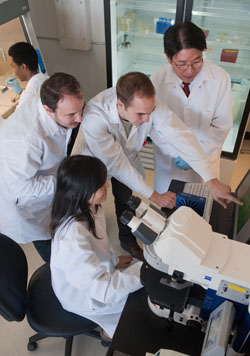Professor Shikha Nangia Named as the Milton and Ann Stevenson Endowed Professor of Biomedical and Chemical Engineering
The College of Engineering and Computer Science (ECS) has announced the appointment of Shikha Nangia as the Milton and Ann Stevenson Endowed Professor of Biomedical and Chemical Engineering. Made possible by a gift from the late Milton and Ann Stevenson,…


 Persister cells, similar to spores, are a small portion of a microbial population that is dormant. Inherent in bacterial populations, it is believed that they play important roles in chronic infections like tuberculosis, persistent fungal infections and lung infections in cystic fibrosis patients. The dormant properties of these persister cells make them tolerant to almost all antibiotics. Therefore, infections can reoccur once a person stops antibiotic treatment since the bacteria can regrow from the persister cells and attack again.
Persister cells, similar to spores, are a small portion of a microbial population that is dormant. Inherent in bacterial populations, it is believed that they play important roles in chronic infections like tuberculosis, persistent fungal infections and lung infections in cystic fibrosis patients. The dormant properties of these persister cells make them tolerant to almost all antibiotics. Therefore, infections can reoccur once a person stops antibiotic treatment since the bacteria can regrow from the persister cells and attack again.